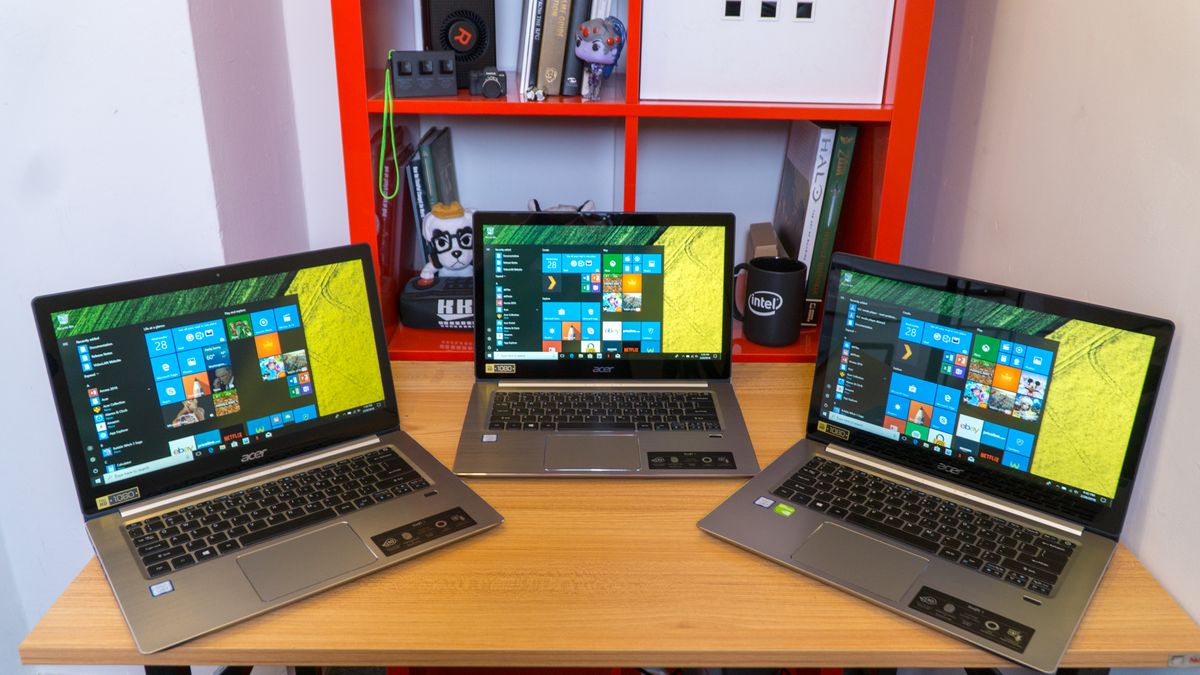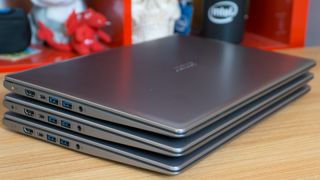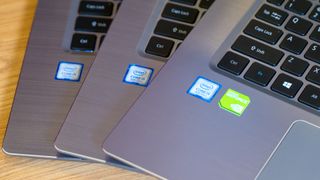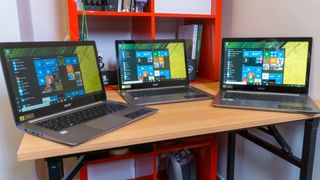The Kaby Lake R Effect: just how much do you get from Intel’s new mobile processor?
Plenty more power (and not much else)

Not too long ago, Intel had released its Kaby Lake Refresh (henceforth Kaby Lake R), or 8th-generation processors for laptops and tablets. At the time, they were billed as an evolution of the previous, 7th-generation chips, bringing quad-core designs to the i5 line and therefore more power.
However, these chips have also been said to boost efficiency when it comes to power consumption.
That said, let’s say you’re at the local computer store. In an aisle littered with choices, you’ve narrowed it down to one laptop, but there are two models side-by-side. One is housing an Intel Core i7 Kaby Lake (last year’s 7th-generation) processor, and another a Core i7 Kaby Lake R (this year’s 8th-generation).
With the chance to save, say, $100 (or £100) in this case, how much more would you really be getting out of that most up-to-date model to make that extra cost worthwhile?
We’ve tested this real-life dilemma with three versions of the same Acer Swift 3 laptop – one with a 7th-gen Intel Core i5, one with an 8th-gen Intel Core i5 and one with that same chip and Nvidia MX150 graphics installed – to demonstrate.
As it turns out, the differences are rather striking in some areas and rather negligible in others.

PCMark 8 Home
7th-gen Core i5: 2,791
8th-gen Core i5: 3,278
8th-gen Core i5 (MX150): 3,203
Geekbench 4
7th-gen Core i5: 3,911 Single-Core; 7,654 Multi-Core
8th-gen Core i5: 4,168 Single-Core; 14,009 Multi-Core
8th-gen Core i5 (MX150): 3,994 Single-Core; 13,557 Multi-Core
Cinebench
7th-gen Core i5: 327 CPU; 49 Graphics
8th-gen Core i5: 530 CPU; 52 Graphics
8th-gen Core i5 (MX150): 512 CPU; 90 Graphics
CPU-Z
7th-gen Core i5: 324.3 Single-Thread; 925.8 Multi-Thread
8th-gen Core i5: 402.7 Single-Thread; 1993.2 Multi-Thread
8th-gen Core i5 (MX150): 397.4 Single-Thread; 1928.4 Multi-Thread
Performance
When it comes to pure computing power output, there’s little doubt that the 8th generation of Intel Core is stronger than the 7th. For instance, we see here that the 8th gen all but spanks the previous in Geekbench 4’s multi-core CPU test.
Get daily insight, inspiration and deals in your inbox
Sign up for breaking news, reviews, opinion, top tech deals, and more.
The same is made obvious by our Cinebench and CPU-Z benchmark results: the leap from dual-core in the 7th generation to quad-core in the 8th generation is enormous.
In practical use, an 8th-gen machine will render multiple streams of data far faster than the previous generation, so expect smoother video and complex image editing from such a device.
However, we’ve noticed interesting differences between the 8th-gen model without Nvidia graphics and the one that’s housing an MX150 graphics chip.
In almost all of these aforementioned tests, the model without dedicated graphics outperformed the one with Nvidia graphics.
According to Intel, these differences amount to ‘unit-to-unit variations’ within a margin of error of 2% to 3%.
All in all, we’re seeing a 17% (in PCMark 8 Home) to an 83% (in Geekbench 4) to as much as a 115% (in CPU-Z) increase in throughput between generations. That’s certainly nothing to scoff at for a difference in price of 100 to 200 bills.

PCMark 8 Battery Life
7th-gen Core i5: 4 hours and 25 minutes
8th-gen Core i5: 4 hours and 26 minutes
8th-gen Core i5 (MX150): 4 hours and 14 minutes
TechRadar Battery Test
7th-gen Core i5: 6 hours and 58 minutes
8th-gen Core i5: 7 hours and 25 minutes
8th-gen Core i5 (MX150): 7 hours and 32 minutes
Battery life
That said, when it comes to longevity, the latest Intel processors don’t enjoy nearly as incredible of an increase, but it’s at least a boost. In short, don’t expect all-day battery life just because you splurged on the model with the latest processor.
In the PCMark 8 Battery Life test, we’re seeing gains so small that they’re within the margin of error (and proof that dedicated graphics a long-lasting laptop does not make).
In our local video playback test, however, the 8th-gen model lasted nearly 30 minutes longer, while the one with Nvidia graphics lasted more than 30 minutes longer.
Of course, Intel never made a big stink about increases in lasting power when it rolled out Kaby Lake R late last year.
Just don’t splurge on an 8th-generation Intel Core processor within a laptop model versus one with the previous version on account of battery life solely.

So, how much better is Kaby Lake R?
Unsurprisingly, 8th-generation Intel Core, or Kaby Lake R, is better than the previous generation Intel Core processors by just about every measure. However, those improvements come in varying levels of magnitude, with battery life gains being the smallest.
It’s difficult for us to say that you’re going to be massively rewarded for spending that extra scratch to get the latest-and-greatest, 8th-gen version of a given laptop you’ve been eying. Frankly, because you’re not: in real-world use, and for most users, you’re not going to see a world of difference.
But, for those who work in rendering video or complex imagery with layers a la Photoshop, it most definitely pays to go quad-core if you can swing it. On that front, the 8th-generation, Kaby Lake R series of Intel Core chips delivers and then some.
- These are the best processors we’ve tested to date
Joe Osborne is the Senior Technology Editor at Insider Inc. His role is to leads the technology coverage team for the Business Insider Shopping team, facilitating expert reviews, comprehensive buying guides, snap deals news and more. Previously, Joe was TechRadar's US computing editor, leading reviews of everything from gaming PCs to internal components and accessories. In his spare time, Joe is a renowned Dungeons and Dragons dungeon master – and arguably the nicest man in tech.
Most Popular





